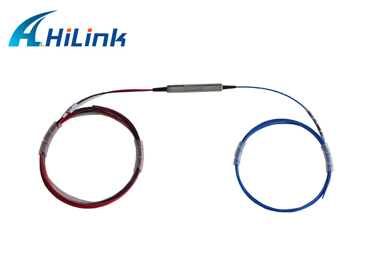Differences Between Optical Isolators and Circulators
Jul. 24, 2023
Optical isolators and circulators are critical components used in optical communication systems to manage the flow of light and prevent signal interference. While both devices serve similar purposes, they have distinct functionalities and applications. In this article, we will explore the differences between optical circulators and isolators, shedding light on their unique characteristics and roles in optical communication.
1. Optical Isolator
An optical isolator is a passive optical component that allows light to pass through in one direction while blocking its transmission in the opposite direction. Its primary function is to protect light sources, such as lasers, from back-reflections or backscattering that can destabilize the laser's performance. By preventing light from returning to the source, optical isolators maintain a unidirectional flow of light in the system.
Key Features of Optical Isolators:
Unidirectional light transmission
Blocking of back-reflected or backscattered light
Protection of light sources from destabilizing feedback
Used in laser systems, fiber amplifiers, and optical communication networks
2. Optical Circulator
An optical circulator is also a passive optical device, but its functionality goes beyond that of an isolator. It is a three-port device that directs light sequentially from one port to the next in a circular manner. Unlike isolators, optical circulators enable bidirectional light transmission with low insertion loss and high isolation between the ports.
Key Features of Optical Circulators:
Three-port device
Allows bidirectional light transmission
High isolation between ports
Low insertion loss
Used in wavelength division multiplexing (WDM) systems, fiber optic networks, and optical amplifiers
3. Applications
The main application of optical isolators is to protect light sources from feedback-induced instabilities, making them essential in laser systems, fiber amplifiers, and optical communication networks. They are commonly used in situations where unidirectional transmission is crucial for maintaining stable and reliable performance of light sources.
On the other hand, optical circulators find extensive use in advanced optical communication systems, such as wavelength division multiplexing (WDM) networks. They enable bidirectional light transmission and are employed in situations where light needs to be routed between multiple ports with minimal loss and high isolation between them.
4. Design and Configuration
Optical isolators are typically based on the Faraday effect, where the direction of light polarization is rotated as it passes through a magnetic field. This effect ensures that light passing in one direction is allowed, while light traveling in the opposite direction experiences a significant loss and is effectively blocked.
Optical circulators, on the other hand, are based on non-reciprocal polarization rotation and the use of magneto-optic materials. They are engineered to redirect light sequentially between the ports in a circular manner, maintaining the desired flow of light through the system.
Frequently Asked Questions
1. Can optical isolators and circulators be used interchangeably?
No, optical isolators and circulators have distinct functionalities and cannot be used interchangeably. Optical isolators are specifically designed to block light in one direction, while optical circulators enable bidirectional light transmission with redirection between ports.
2. Are these devices essential in modern optical communication systems?
Yes, both optical isolators and circulators play critical roles in ensuring the efficient and stable operation of optical communication systems. They are vital components in various applications, especially in high-speed data transmission and WDM networks.
3. Can I cascade multiple isolators or circulators together?
While it is possible to cascade multiple optical isolators or circulators, it may introduce additional insertion losses and complexity to the system. The use of each component should be carefully considered based on the specific requirements of the optical communication setup.
In summary, optical isolators and circulators are essential devices in optical communication systems, each with distinct functionalities. Optical isolators provide unidirectional light transmission and protect light sources from feedback-induced instability, while optical circulators allow bidirectional light transmission with redirection between ports. Understanding their differences and applications is crucial for designing and implementing efficient and reliable optical communication networks.












